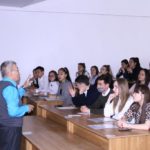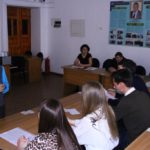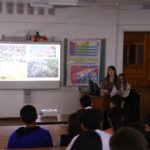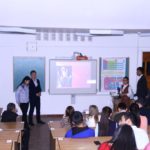WITHIN THE FRAMEWORK OF THE “ROUHANI ZHANGYRU” PROGRAM, A ROUND TABLE “THE CONTRIBUTION OF KAZAKHSTAN TO THE WORLD CULTURAL FUND” WAS HELD
[Дата публикации: 26.04.2019, 12:37:58, published by: Баспасөз-орталығы]
The organizer of this event was the department “History of Kazakhstan and social and humanities disciplines.”
The moderator was the head of the department “Assembly of People of Kazakhstan”, Master of Humanities Zhanabergenova Dinara Kenesovna.
An interesting lecture on ancient metallurgy was made by associate professor of the department of metalworking Amanzholov Zhuman Kalykovich. Zhuman Kalykovich said that the furnaces for smelting iron ore began to be built in Central Asia, in Kazakhstan: “The land of our country is rich in minerals.” He also told what and how to do it for the manufacture of weapons and tools.
Then a guest, a student of group P-17-1 of the Temirtau Industrial Technological College Ucherova Ayauzhan, spoke. In her report “The equestrian culture of the Kazakhs,” Ayuzhan said that the Great Steppe gave the world horse breeding and equestrian culture. For the first time, human horse domestication took place on the territory of modern Kazakhstan, as evidenced by excavations of the Botai settlement in the north of the country.
Students of TMP-17k-2 Rakhymbayeva Shynar and Saduaқas Aңsar presented a very interesting report on the theme “The contribution of nomadic civilization to world culture”. In their report, it was noted that the contribution of nomads to world civilization was large. Almost half of the states of Eurasia are founded by nomads or with their participation. The nomads themselves did not create any religion, but contributed to the spread of Buddhism, Christianity and Islam. In military affairs, they made a revolution. They created equestrian archery and cavalry. As a result of the conquests, the nomads gained power over all sea and land trade routes.
Then the student of the MS&NT-18 group Agarys Akbota and the student of the group C&A-18 Poluektova Victoria made a presentation with the report “Kazakhstan – the home of apples”, in their speech they told that Kazakhstan is the keeper of the progenitor of all the Earth’s apple trees – the apple Sivers. On the ancient routes of the Silk Road from the foothills of the Trans-Ili Alatau on the territory of Kazakhstan, it fell into the Mediterranean and then spread throughout the world.
Alpysbayeva Aneliya, a student of the A&M-18k-2 group, told about the jewelry art of the nomads. In her report, she told that a large number of jewelers-zergers produced silver combs (tarak) and toothpicks (ths shukysh), as well as various gold jewelry, but they were rare because of the high price of metal. At mostly zergers worked with silver, creating wonderful pieces of jewelry. She clearly demonstrated these decorations on herself.
What contribution did Shokan Valikhanov make to Russian and world science were told by students of the E-17 group Tursunov Adilet and Seydullayev Darkhan. The historian, ethnographer, linguist, folklorist, geographer S. Valikhanov investigated the ethnic, political, cultural and socio-economic history of the Kazakhs and other peoples of Central Asia. In his writings he paid special attention to the oral folk art of the Kazakhs as the cultural and spiritual heritage of the ethnos Sh.Valikhanov occupies a worthy place among prominent personalities of world science. His travels to Tien Shan, to Eastern Turkestan (Dzungaria and Kashgaria), scientific works and research became an important contribution to world Oriental studies.
Atakulova Zemfira, a student of the CT-17 group, presented a report on the theme “Kazakhstan’s experience in the process of establishing interfaith harmony”. She noted that during the years of independence, our state has put forward a number of initiatives aimed at strengthening peace and stability in the region. In general, Kazakhstan’s initiatives aimed at strengthening peace and harmony are of great importance for maintaining peace and stability in Central Asia, on the Eurasian continent, and throughout the world. In the international arena, Kazakhstan is perceived as the territory of the world, a platform for dialogue and rapprochement of cultures and religions.
The next topic of the report is the “hot” topic of today. The students of the TMT-18k group Nұrғalızyz Aқerke, Abdukarimuly Saparbek, Suleimenov Asқar, Yerzhan Ardaқ and Lemirul Nuray showed and told about how Dimash discovered Kazakhstan to the world society. It was Dimash who was the first singer in the history of the Kazakh people who conveyed the beauty, depth and strength of the Kazakh songs, originating in the centuries-old history of his people, to listeners of all continents on the planet. In many countries, music lovers began to study Kazakh culture, art, even learn to sing Kazakh songs. In the one and a half billion China, the songs “Daidydau” and “mytylmas kүn” occupy leading places in the top charts, they are even sung in schools. Dimash’s favorite book “Abai Zholy” is now being translated into Chinese.
The history and culture of the Kazakh land are multifaceted and are of great importance for world culture.
Press service of KSIU
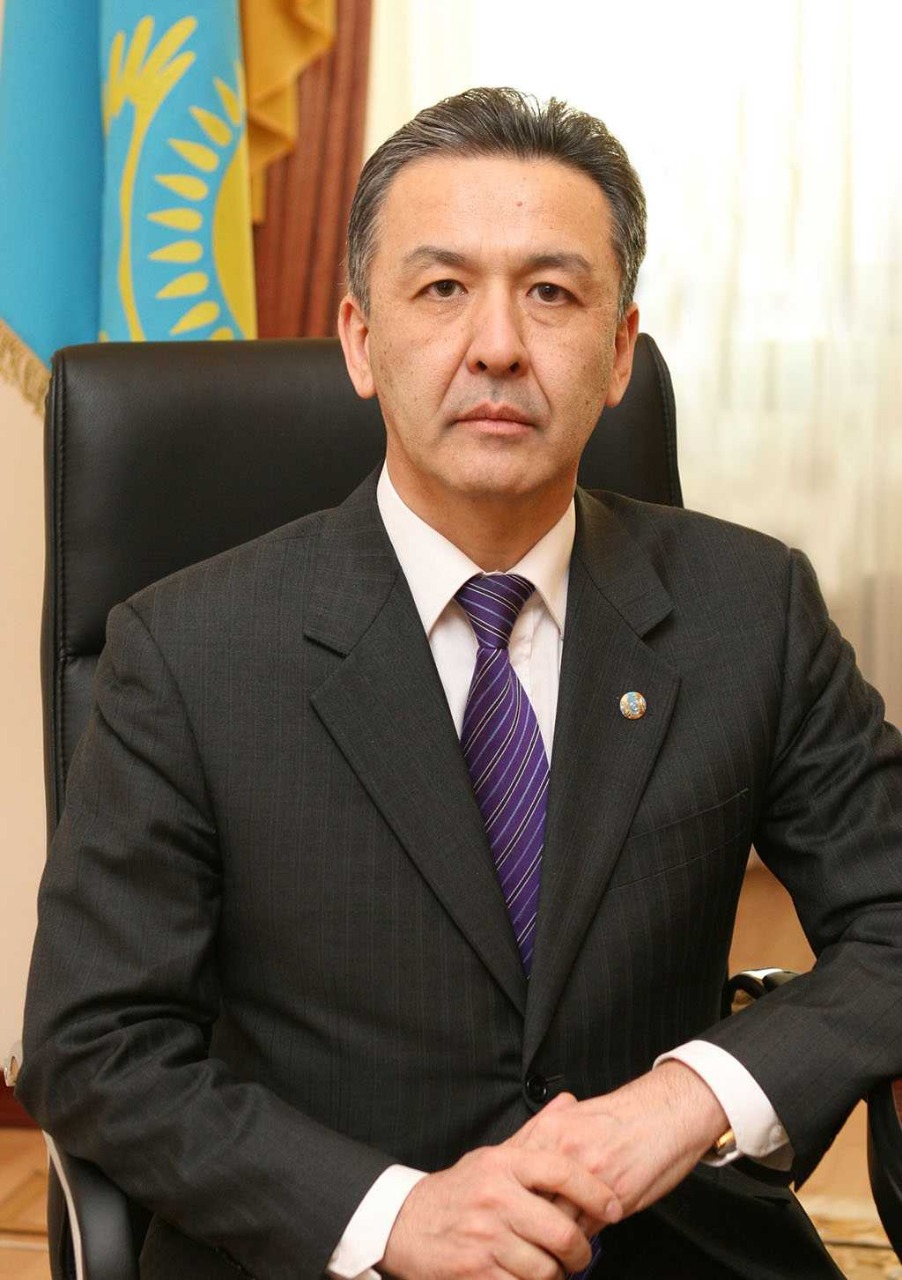 For the period of 50 years Karaganda Industrial University, founded in 1963, has become one of the leading higher ...
For the period of 50 years Karaganda Industrial University, founded in 1963, has become one of the leading higher ...




















